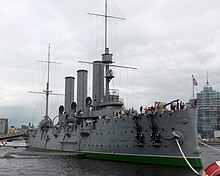The Museums Portal
A museum is an institution dedicated to displaying and/or preserving culturally or scientifically significant objects. Many museums have exhibitions of these objects on public display, and some have private collections that are used by researchers and specialists. Museums host a much wider range of objects than a library, and usually focus on a specific theme, such as the arts, science, natural history or local history. Public museums that host exhibitions and interactive demonstrations are often tourist attractions, and many attract large numbers of visitors from outside their host country, with the most visited museums in the world attracting millions of visitors annually.
Since the establishment of the earliest known museum in ancient times, museums have been associated with academia and the preservation of rare items. Museums originated as private collections of interesting items, and not until much later did the emphasis on educating the public take root. (Full article...)
Selected museum
Museum de Oude Wolden (Dutch pronunciation: [myˈzeːjʏm də ˌʔʌudə ˈʋɔldə(n)]; English: Museum The Old Wolds), abbreviated as MOW, is a regional museum in the village of Bellingwolde in the Netherlands. The museum focuses on art and history of the regions of Oldambt and Westerwolde in the east of the province of Groningen.
The museum opened on 10 August 1973. In the first decades, it primarily exhibited historical objects documenting everyday life. In the late 1990s, the museum started to exhibit artworks of artist collective De Ploeg and magic realist painter Lodewijk Bruckman. Since 2012, it has a permanent display of paintings by Bruckman and temporary exhibitions.
The museum is an independent foundation that is mainly funded by the municipality of Bellingwedde. From 2013 to 2016, the museum had around 4,700 visitors per year. It is one of the lesser-visited museums in Groningen. (Full article...)
Selected interior image
Selected general article

A collection manager ensures the proper care and preservation of objects within cultural institutions such as museums, libraries, and archives. Collection managers, along with registrars, curators, and conservators, play an important role in collections care. Collection Managers and Registrars are two distinct collection roles that are often combined into one within small to mid-size cultural institutions. Collection Managers can be found in large museums and those with a history and natural history focus whose diverse collections require experienced assessment to properly sort, catalog, and store artifacts. A collection manager may oversee the registrar, archivist, curator, photographer, or other collection professionals, and may assume the responsibilities of these roles in their absence within an organization. (Full article...)
Did you know...
- ... that Sheikh Mujibur Rahman proclaimed the independence of Bangladesh from his residence in Dhaka before his arrest by the Pakistan Army?
- ... that after Nazi Germany placed anti-aircraft batteries on the property of the Genoa Conservatory, the school moved into the Villa Saluzzo Serra art museum to maintain the safety of its students?
- ... that The Citi Exhibition: Manga at the British Museum was the largest exhibition of manga ever held outside Japan?
- ... that State Auto Mutual's life-size nativity scene was donated to the Museum of Catholic Art and History in 2023 for display at St. Joseph Cathedral?
- ... that while Joseph Longworth thought that he would be remembered only as "the son of his father and the father of his son", there is today a wing of the Cincinnati Art Museum named for him?
- ... that the Museum of Classic Sci-Fi is located in the cellar of a house in Allendale, Northumberland?
Get involved
For editor resources and to collaborate with other editors on improving Wikipedia's Museums-related articles, see WikiProject Museums.
Selected exterior image
Selected type of museum

A museum ship, also called a memorial ship, is a ship that has been preserved and converted into a museum open to the public for educational or memorial purposes. Some are also used for training and recruitment purposes, mostly for the small number of museum ships that are still operational and thus capable of regular movement.
Several hundred museum ships are kept around the world, with around 175 of them organised in the Historic Naval Ships Association though many are not naval museum ships, from general merchant ships to tugs and lightships. Many, if not most, museum ships are also associated with a maritime museum. (Full article...)


















































